#argema mittrei
Explore tagged Tumblr posts
Text

Comet Moth, Argema mittrei : Day 15 of #invertober
887 notes
·
View notes
Text
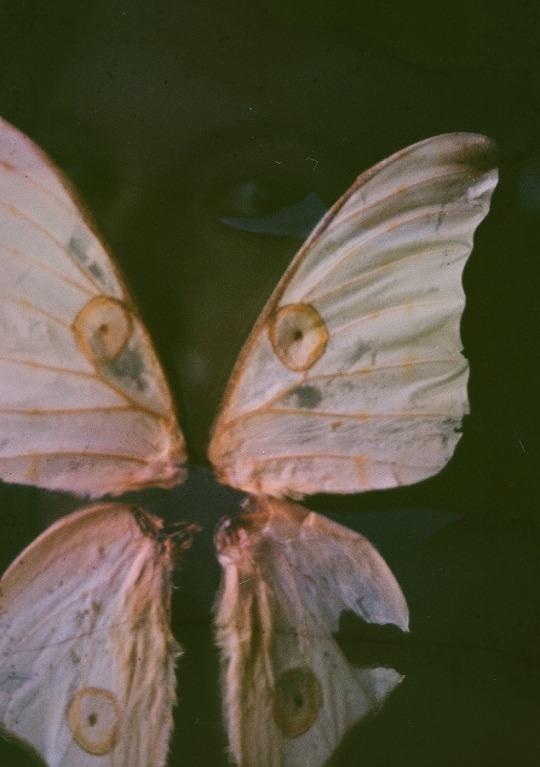

Argema mittrei wings (comet moth)
8K notes
·
View notes
Text












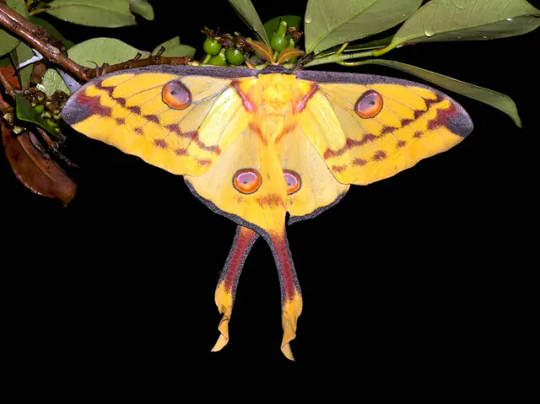







Мадагаскарская комета или Сатурния мадагаскарская (Argema mittrei) - Эту представительницу семейства павлиноглазок в природе можно увидеть только на африканском острове, именем которого она и названа. Также бабочку называют «сатурния-комета», «бабочка-комета», «мадагаскарская лунная бабочка», «павлиноглазка-комета», «мадагаскарская комета».
Мадагаскарская сатурния имеет яркий желтый цвет, на каждом из крыльев есть коричневые круги с черными точками посередине. Вершины крыльев украшены темно-коричневыми пятнами. По крыльям проходит тонкий красновато-коричневый волнистый узор. Свое необычное название сатурния-комета получила благодаря оригинальному внешнему виду: на задних крыльях у н��е есть красные выросты, напоминающие след летящей кометы, они помогают ей балансировать во время полета.
Мадагаскарская сатурния относится к гигантским бабочкам, размах ее крыльев составляет 14-18 см. Брюшко крупное, бочкообразное. У самца перистые и крупные усики. Самцы и самки этого вида тропических бабочек различаются. Самка мадагаскарских сатурний больше, у нее более широкие и округлые крылья, а выросты на задних крыльях чуть короче – 8 см, в то время как у самцов они достигают длины 13 см.
У сатурнии-кометы нет развитого ротового аппарата, поэтому она ничем не питается.Бабочка расходует пищевые запасы, собранные ей еще в том момент, когда бабочка была на стадии личинки. Сатурния комета активны в темное время суток. Их можно встретить вечером или ранним утром. Днем же насекомые сидят на одном месте. Необычный внешний вид имеют и гусеницы сатурнии-кометы: тело личинки покрыто зелеными чешуйками. Гусеницы питаются тропическими растениями: уапакой, скумпией, марулой и т. п. Стадия личинки долгая: она может длиться до двух месяцев. Окукливаются в белоснежных пористых коконах. После стадии куколки появляется взрослая бабочка. Наслаждаться ее великолепным видом можно недолго, т. к. живет сатурния-комета всего 4-5 дней. Целью имаго является оставить потомство. На Мадагаскаре успешно разводят этих великолепных бабочек на особых фермах.
Madagascar Comet or Saturnia madagascarensis (Argema mittrei) - This representative of the peacock-eye family can be seen in nature only on the African island after which it is named. The butterfly is also called "Saturnia comet", "comet butterfly", "Madagascar moon butterfly", "peacock-eye comet", "Madagascar comet".
The Madagascar Saturnia has a bright yellow color, on each of the wings there are brown circles with black dots in the middle. The tops of the wings are decorated with dark brown spots. A thin reddish-brown wavy pattern runs along the wings. Saturnia comet got its unusual name due to its original appearance: on the hind wings it has red growths resembling the trail of a flying comet, they help it balance during flight.
The Madagascar Saturnia is a giant butterfly, its wingspan is 14-18 cm. The abdomen is large, barrel-shaped. The male has feathery and large antennae. Males and females of this species of tropical butterflies differ. The female of the Madagascar Saturnia is larger, it has wider and rounder wings, and the outgrowths on the hind wings are slightly shorter - 8 cm, while in males they reach a length of 13 cm.
The Saturnia-cometa does not have a developed mouth apparatus, so it does not feed on anything. The butterfly uses up food reserves collected by it back when the butterfly was at the larval stage. Saturnia cometa are active at night. They can be found in the evening or early morning. During the day, the insects sit in one place. The caterpillars of the Saturnia-cometa also have an unusual appearance: the body of the larva is covered with green scales. Caterpillars feed on tropical plants: uapaca, smoke tree, marula, etc. The larval stage is long: it can last up to two months. They pupate in snow-white porous cocoons. After the pupa stage, an adult butterfly appears. You can not enjoy its magnificent appearance for long, because the Saturnia-cometa lives only 4-5 days. The goal of the imago is to leave offspring. In Madagascar, these magnificent butterflies are successfully bred on special farms.
Источник: //domvred.ru/madagaskarskaya-saturniya/,//x.com / flyamur/status/1343837885779374080,/ucrazy.org/animals/1422804820-madagaskarskaya-kometa.html,/fotkiflo.ru/zhivotnye/saturniya-madagaskarskaya,//ekogradmoscow.ru/eko-blog/umnyj-dom-s-aleksandrom-perepechko/madagaskarskaya-kometa-vasilij-klimov-i-ego-okno-v-prirodu,//www.mirkrasiv.ru/nature/madagaskarskaja-kometa-argema-mittrei-krupneishaja-babochka-planety.html, /pikabu.ru/story/videli_takikh_babochek_9580589.
#Madagascar#nature#insect#insect art#insect photography#insect video#butterfly#Argema mittrei#Madagascar Saturnia#plants#nature aesthetic#flowers#macro photo#природа#Мадагаскар#фото насекомых#насекомые#бабочка#Сатурния мадагаскарская#растения#цветы#макрофото#видео
330 notes
·
View notes
Text

A comet moth (Argema mittrei) in Andasibe, Madagascar
by Andy Wilson
#comet moth#madagascan moon moth#butterflies and moths#argema mittrei#argema#saturniidae#lepidoptera#insecta#arthropoda#wildlife: madagascar#wildlife: africa
235 notes
·
View notes
Text
Moth Of The Day #67
Comet Moth / Madagascan Moon Moth
Argema mittrei
From the saturniidae family. They have a wingspan of 20cm and a tail span of 15 cm. They inhabit the deepest part of the Madagascan rainforest, they are becoming endangered due to their habitat loss.
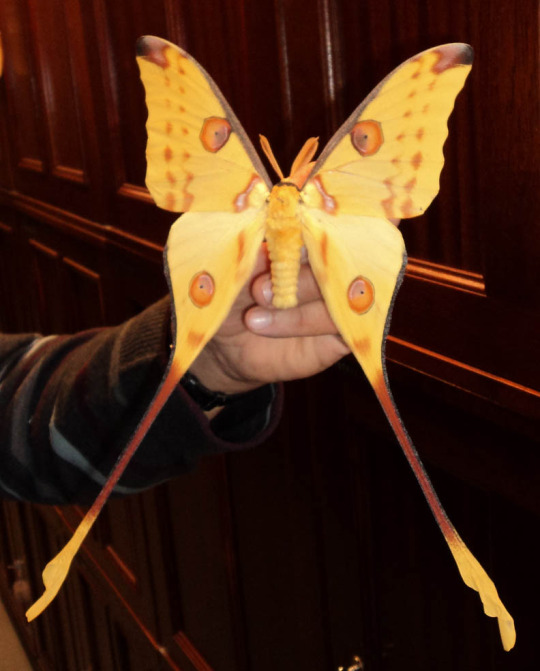
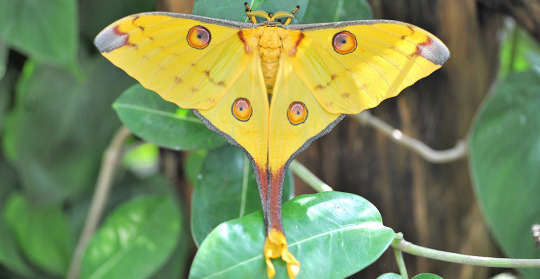
#moth#moths#pretty moth#motd#moth of the day#pretty moths#bug#insect#nature#lepidopterology#lepidoptera#insects#bugs#saturniidae#saturniidae moth#comet moth#madagascan moon moth#argema mittrei
422 notes
·
View notes
Text

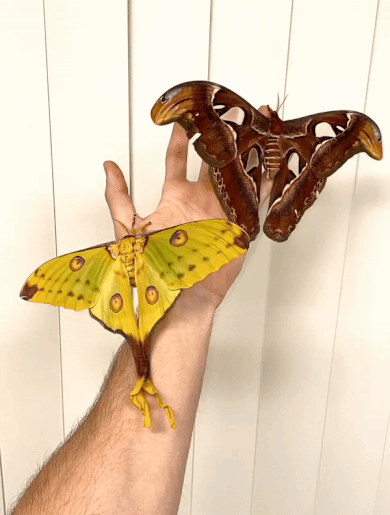
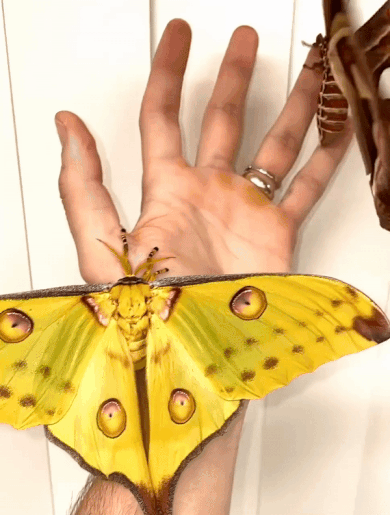
a comet moth (argema mittrei) & an atlas moth (attacus atlas) | source
#comet moth#atlas moth#moths#stim#sfw#argema mittrei#attacus atlas#insects#bugs#green#brown#yellow#white#hands#wings#ishy gifs#postish
541 notes
·
View notes
Text



6 notes
·
View notes
Text
Moth of the Week
Comet Moth
Argema mittrei
TW: Trypophobia for pictures
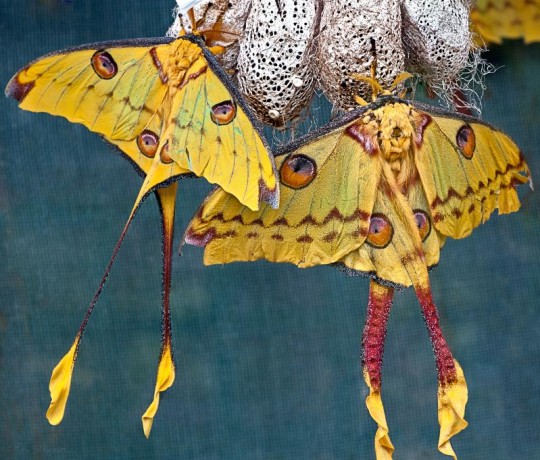
The comet moth or the Madagascan moon moth was first described in 1847 by Félix Édouard Guérin-Méneville. This moth is a part of the Saturniidae family and is one of the largest silk moths. This species receives its genus name Argema, meaning 'speckled eye' in Greek, from the large eyespots on its forewings and hindwings. Additionally, the name comet moth comes from their long hindwing tails.
Description The comet moth has large yellow wings with magenta patterns by the head, at the tips and outer margin of the forewings, the top and bottom of the hindwings, and the stem of the hindwing tails. Furthermore, the top edge of the forewings, outer edge of the hindwings, and both sides of the tail are outlined in black. Each of the hindwings and the forewings have large magenta and orange eyespots also outlined in black. The final touch on the wings are white accents by the head and in the eyespots. The body of the comet moth is yellow or a yellow-orange with the top of the legs matching then fading to black. They also have orange antennae.
Females have more rounded wings and larger bodies for egg laying
Average male wingspan: 20 cm (≈7.9 in)
Average male tail span of 15 cm (≈5.9 in)
The males have a longer, more feathery antennas than the females to pick up mating pheromones
Males have longer, thinner tails while females have shorter, thicker ones
Diet and Habitat This moth’s diet and host plants include the smoke tree, the marula tree, the Brazilian peppertree, and the cider gum tree. Most sources say adult moths do not feed because of their inability to use their shrunken mouths. Comet moths are native to Madagascar and nowhere else in the world. Their natural habitat are the Madagascan rainforests. However, they can and have been bred in captivity. Today due to habitat loss, their range is limited to the rainforests located south and east of Madagascar’s capital.
Mating Female moths release and pheromone to attract male mates, who fly to find them. After mating, the females lay 120 to 170 eggs on the host plants that will hatch into caterpillars in 10 to 20 days.
Predators Chameleons, geckos, bats, and birds prey on comet moths. To combat this, the comet moth uses its colors to camouflage itself. Additionally, it uses its long tails to mess with a bat’s echolocation and cause it to attack the tails instead of the moth’s vulnerable body. Furthermore, this species has the ability to use ultrasound absorption so the bat’s echo will come back fainter, and the moth is harder to “see.”Finally, the wing’s eyespots are used to fool predators into thinking the comet moth is a more dangerous animal. The largest current threat to comet moths are humans, and this moth is now endangered sure to habitat loss.
Fun Fact This moth used to be on the 1000 Malagasy ariary banknote.
(Source: Wikipedia, AZ Animals, Natural History Museum UK, The Company of Biologists, Moth Identification)
#animals#facts#insects#libraryofmoths#bugs#moth#mothoftheweek#lepidoptera#comet moth#madagascan moon moth#late post#sorry#tw: trypophobia#Argema mittrei#Saturniidae
38 notes
·
View notes
Text
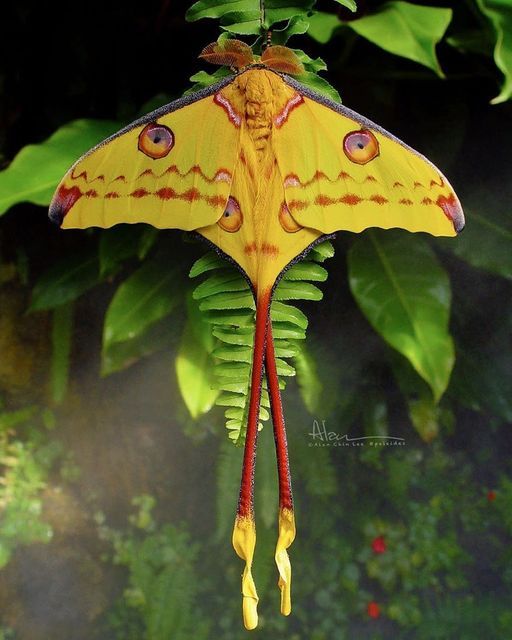
Comet Moth aka Madagascan Moon Moth (Argema mittrei), male, family Saturniidae, endemic to Madagascar
photograph by Alan Chin Lee
#silk moth#moon moth#moth#argema#saturniidae#lepidoptera#insect#entomology#animals#nature#madagascar
1K notes
·
View notes
Note
give us the moth list bestie i know you wanna talk about it
THE MOTH LIST!!!!!
OK OK OK THIS LIST IS BASED LESS ON PERSONALITY AND MORE ON AESTHETICS LETS BEGIN
RAPH: Atlas Moth (Attacus atlas)
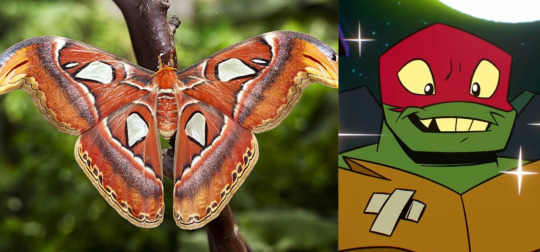
LEO: Scylla Firetip (Elbella scylla)
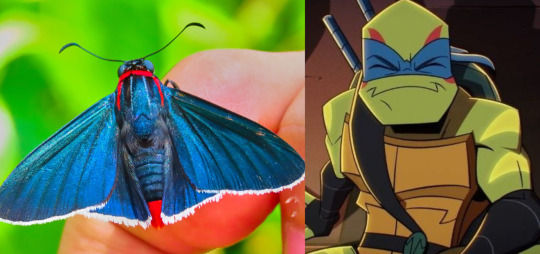
DONNIE: White-lined sphinx moth (Hyles lineata)

MIKEY: Comet moth/Madagascan moon moth (Argema mittrei)

BONUS CONTENT
APRIL: Madagascan sunset moth (Chrysiridia rhipheus)
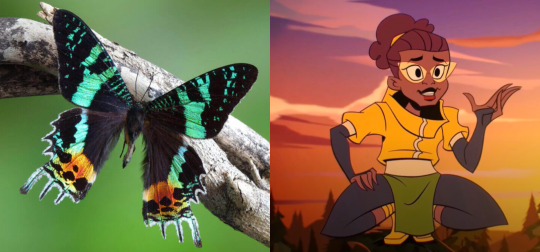
SPLINTER: Isabella tiger moth aka wooly bear moth (Pyrrharctia isabella)

CASEY JONES: Glover's silkmoth (Hyalophora gloveri)

CASEY JR: Cabbage tree emperor moth (Bunaea alcinoe)
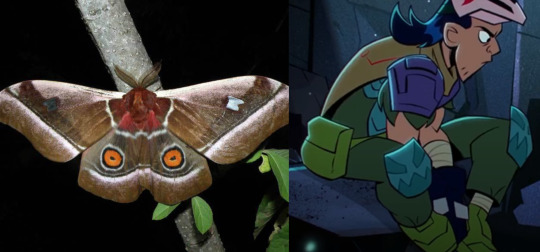
509 notes
·
View notes
Text
Daily Dose of Lepidoptera
[Day 2]
-Owl Moth-
Brahmaea wallichii


-Staudinger’s Longtail-
Erateina staudingeri


-Comet Moth- ((Also known as the Madagascan Moon Moth))
Argema mittrei


109 notes
·
View notes
Text
Argema mittrei
Also known as comet moth lives in Madagascar.
The male has a wingspan of 20 centimeters and a tail span of 15 centimeters. Which makes it one of the world’s largest silk moths.




The female lays 120-170 eggs.
They unfortunately live only between 6-8 days.
When the moths emerge from their cocoons as adults they no longer feed on plants to survive. They do have a mouth and a gut but neither function.
(Follow for more biology facts)
#go viral#interesting#interesting facts#biology#animals#cute animals#cute#nature#aesthetic#moths#i love moths#halloween#science facts#science#nature photography#photography#photooftheday#photoshoot
102 notes
·
View notes
Text
Invertober 2024 day 15: Comet moth (Argema mittrei)

24 notes
·
View notes
Text





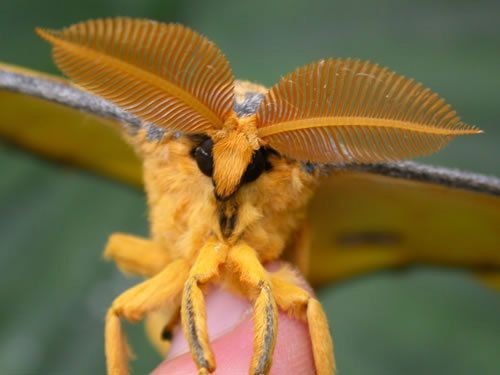

The comet moth or Madagascan moon moth (Argema mittrei) is a moth native to the rain forests of Madagascar. The species was first described by Félix Édouard Guérin-Méneville in 1847. The adult moth cannot feed and only lives for 4 to 5 days. Although endangered in the wild due to habitat loss, the comet moth has been bred in captivity.
There are physical differences among females and males. Females have more rounded wings. The male has a wingspan of 20 cm (7.9 inches) and a tail span of 15 cm (5.9 inches), making it one of the world's largest silk moths. The males have long, feathery antennas and the females have thin antennas. Argema mittrei wings have large eyespot, giving the appearance of a large and dangerous creature that should not be attacked.
36 notes
·
View notes
Text
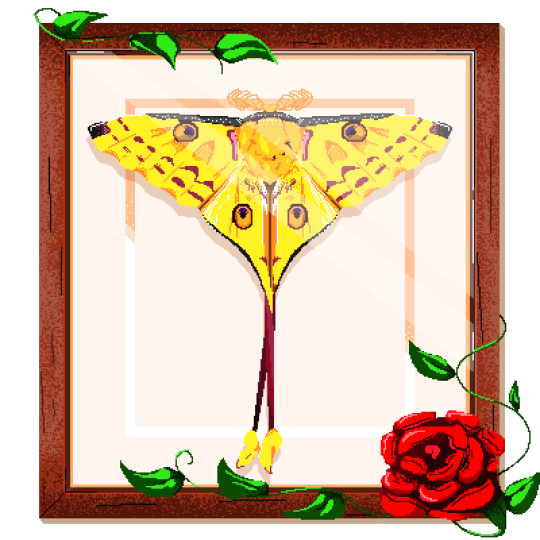
Meet one of my favorite moths of all time Comet Moth or Madagascan Moon Moth (Argema mittrei)! I hope you guys like it :3
#pixel#pixelart#digitalart#art#insect#arthropod#bug#bugs#moth#cometmoth#arthropods#pixel art#insects
40 notes
·
View notes
Text

The Comet Moth ( Argema mittrei) or Madagascan moon moth, Native to the rain forests of Madagascar.
📷 Brian Gratwicke on Flickr
196 notes
·
View notes